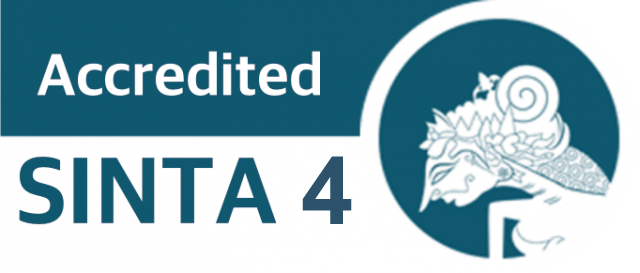Elementary School Teachers Perceptions toward Teaching Reproductive Material as Part of Science Education in Elementary Schools
DOI:
10.29303/jpm.v20i6.9885Published:
2025-10-04Issue:
Vol. 20 No. 6 (2025)Keywords:
Elementary School Science; Reproductive Education; Sensitive Learning; Social Norms; Teacher PerceptionArticles
Downloads
How to Cite
Downloads
Metrics
Abstract
Teaching reproductive education at the elementary school level remains a sensitive issue, balancing the need to prevent sexual abuse through proper knowledge with concerns about social, religious, and cultural norms. This study aims to explore the perceptions of prospective elementary school teachers in Gorontalo regarding reproductive content in science education. Using a descriptive quantitative design, data were collected from 60 respondents through a closed-ended questionnaire. The findings show that while most respondents opposed teaching reproductive material at the elementary level due to moral and cultural concerns, many were not against the content itself but rather the method of delivery and the consideration of children’s maturity. This suggests that reproductive education could be implemented if presented through contextual and values-based approaches, such as moral-educational narratives. The study highlights both the sensitivity of the topic and the potential pathways for its gradual and culturally aligned integration into science education.
References
P. Hidayat and A. Ulfah, “Model pembelajaran Probalisi (Problem Based-Learning with Science Islamic Integrated) Materi Kesehatan Reproduksi dalam Meningkatkan Efikasi Diri di Era Society 5.0,” J. Fundadikdas (Fundamental Pendidik. Dasar), vol. 6, no. 1, pp. 13–26, 2023, doi: 10.12928/fundadikdas.v6i1.7300.
M. Imaduddin and Z. Khafidin, “Ayo Belajar IPA dari Ulama: Pembelajaran Berbasis Socio-Scientific Issues di Abad ke-21,” Thabiea J. Nat. Sci. Teach., vol. 1, no. 2, pp. 102–120, 2018, doi: 10.21043/thabiea.v1i2.4439.
Kemendikbud, “Dokumen Kurikulum 2013 Revisi: Kompetensi Dasar Sekolah Dasar,” Jakarta, 2016.
Kemendikbud, Buku Guru dan Siswa Kelas 6 SD Tema 6: Menuju Masyarakat Sehat. Jakarta: Kementerian Pendidikan dan Kebudayaan, 2017.
B. Mathews and D. Collin-Vézina, “Child Sexual Abuse: Toward a Conceptual Model and Definition,” Trauma, Violence, Abus., vol. 20, no. 2, pp. 131–148, 2019, doi: 10.1177/1524838017738726.
T. Solehati et al., “Intervensi Bagi Orang Tua dalam Mencegah Kekerasan Seksual Anak di Indonesia: Scoping Review,” J. Obs. J. Pendidik. Anak Usia Dini, vol. 6, no. 3, pp. 2201–2214, 2022, doi: 10.31004/obsesi.v6i3.1914.
M. Ninawati and S. L. Handayani, “Pengaruh Pendidikan Seksual dalam Pembelajaran terhadap Perilaku Kekerasan Seksual Siswa Kelas VI,” J. Ilm. Sekol. Dasar, vol. 2, no. 2, pp. 217–223, 2018, doi: 10.23887/jisd.v2i2.13791.
K. Susiani, A. Sherlita, Ni Luh Dhea Utami, Ni Luh Vira Liustika Dewi, Kadek Ayu Dwika Astari, A. Hartini, and S. A. Thomas, Pendidikan Seksual pada Anak. Jakarta: Nilacakra, 2024.
C. Hardman, J. Hardman, and F. Nxumalo, “Cultural Taboos in Mediating Science in a Namibian Bilingual Primary School,” Read. Writ. J. Read. Assoc. South Africa, vol. 9, no. 1, pp. 93–99, 2018, doi: https://doi.org/10.4102/rw.v9i1.399.
Y. Wang, D. Zhang, and J. Zhao, “Comprehensive Sexuality Education in Primary Schools: A Systematic Review of Effectiveness and Cultural Adaptation,” J. Sch. Health, vol. 93, no. 8, pp. 623–634, 2023, doi: https://doi.org/10.1111/josh.13342.
A. Irawan, D. Pratiwi, and R. Suryadi, “Current State, Challenges, and Opportunities of School-Based Sexual and Reproductive Health Education in Indonesia: A systematic Literature Review,” Int. J. Adolesc. Youth, vol. 29, no. 1, pp. 55–72, 2024, doi: https://doi.org/10.1080/02673843.2024.2345678.
L. S. Nowell, J. M. Norris, D. E. White, and N. J. Moules, “Thematic Analysis: Striving to Meet the Trustworthiness Criteria,” Int. J. Qual. Methods, vol. 16, no. 1, pp. 1–13, 2017.
S. Iskandar, “Pengaruh Perilaku Gemar Menonton Film Horor terhadap Gangguan Emosional Anak Menjelang Usia Baligh di SDN 11 Limboto,” PEMBELAJAR J. Ilmu Pendidikan, Keguruan, dan Pembelajaran, vol. 4, no. 1, p. 41, 2020, doi: 10.26858/pembelajar.v4i1.12310.
U. Fauziah, “Problem Based Learning Terintegrasi Karakter Religius Pada Materi Sistem Reproduksi Manusia,” J. Pendidik. Inform. dam Sains, vol. 7, no. 1, pp. 91–106, 2018, [Online]. Available: http://www.journal.ikippgriptk.ac.id/index.php/saintek/article/view/772
I. Permatasari, A. Ramdani, and A. Syukur, “Development of Science, Environment, Technology, and Society Based on Science Inquiry in the Human Reproductive System Material,” J. Pijar MIPA, vol. 13, no. 3, pp. 74–78, 2019, doi: 10.29303/jpm.v14i2.1256.
I. Irhamna and S. Purnama, “Peran Lingkungan Sekolah dalam Pembentukan Karakter Anak Usia Dini di PAUD Nurul Ikhlas,” J. Pendidik. Anak, vol. 11, no. 1, pp. 68–77, 2022, doi: 10.21831/jpa.v11i1.46688.
N. G. Lederman and J. S. Lederman, “Research on Teaching and Learning of Nature of Science,” Handbook of Research on Science Education Volume 2. Routledge, pp. 600–620, 2014.
E. Sediyono, W. Kristinawati, and M. C. Paseleng, “Empowering Teachers in the Socialization of the Anti-Sexual Violence Behavior in Primary Schools,” Int. J. Interact. Mob. Technol., vol. 12, no. 8, pp. 20–29, 2018, doi: 10.3991/ijim.v12i8.9641.
R. Karsidi, “Budaya Lokal dalam Liberalisasi Pendidikan,” J. Soc. Media, vol. 1, no. 2, pp. 19–34, 2017, doi: 10.26740/jsm.v1n2.p19-34.
F. Yusufi et al., “Pendidikan Seksualitas dalam Islam: Pandangan, Kewajiban dan Batasan,” DUCARE J. Educ. Learn., vol. 1, no. 1, pp. 21–30, 2024.
S. Nadirah, “Peranan Pendidikan dalam Menghindari Pergaulan Bebas Anak Usia Remaja,” Musawa J. Gend. Stud., vol. 9, no. 2, pp. 309–351, 2017, doi: 10.24239/msw.v9i2.254.
UNESCO, UNAIDS, UNFPA, UNICEF, UN Women, and WHO, “International Technical Guidance on Sexuality Education: An Evidence‑Informed Approach (Revised Edition),” 2018.
N. Haberland and D. Rogow, “Sexuality Education: Emerging Trends in Evidence and Practice,” J. Adolesc. Heal., vol. 70, no. 5, pp. 761–768, 2022, doi: https://doi.org/10.1016/j.jadohealth.2021.12.002.
S. Martínez, M. Castro, and J. Ortega, “Pre-Service Teachers’ Attitudes and Preparedness Toward Teaching Sexuality and Reproductive Health in Primary Education: A Cross-Country Study,” Teach. Teach. Educ., vol. 103, p. 103344, 2021, doi: https://doi.org/10.1016/j.tate.2021.103344.
Author Biography
Suhendra Iskandar, IAIN SULTAN AMAI GORONTALO
License
Copyright (c) 2025 Suhendra Iskandar

This work is licensed under a Creative Commons Attribution 4.0 International License.
The following terms apply to authors who publish in this journal:
1. Authors retain copyright and grant the journal first publication rights, with the work simultaneously licensed under a Creative Commons Attribution License 4.0 International License (CC-BY License) that allows others to share the work with an acknowledgment of the work's authorship and first publication in this journal.
2. Authors may enter into separate, additional contractual arrangements for the non-exclusive distribution of the journal's published version of the work (e.g., posting it to an institutional repository or publishing it in a book), acknowledging its initial publication in this journal.
3. Before and during the submission process, authors are permitted and encouraged to post their work online (e.g., in institutional repositories or on their website), as this can lead to productive exchanges as well as earlier and greater citation of published work (See The Effect of Open Access).











